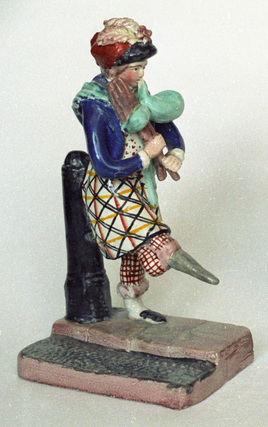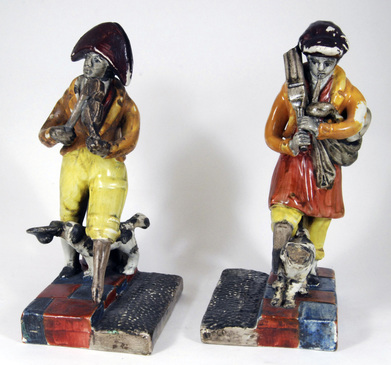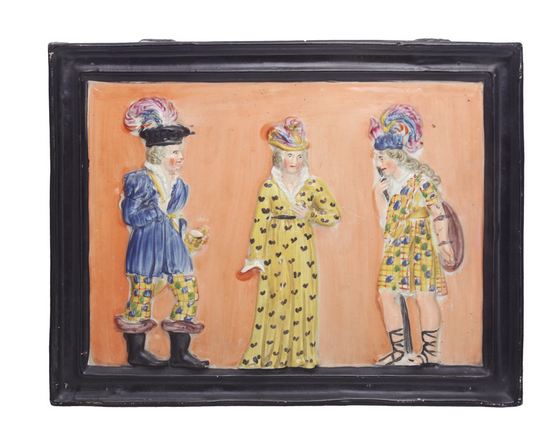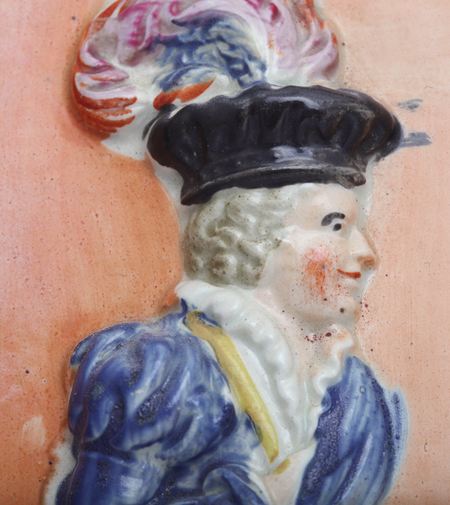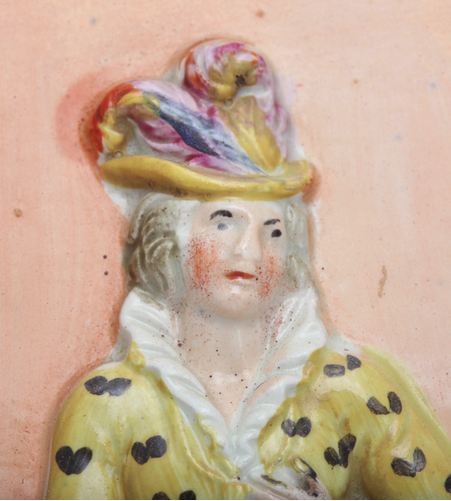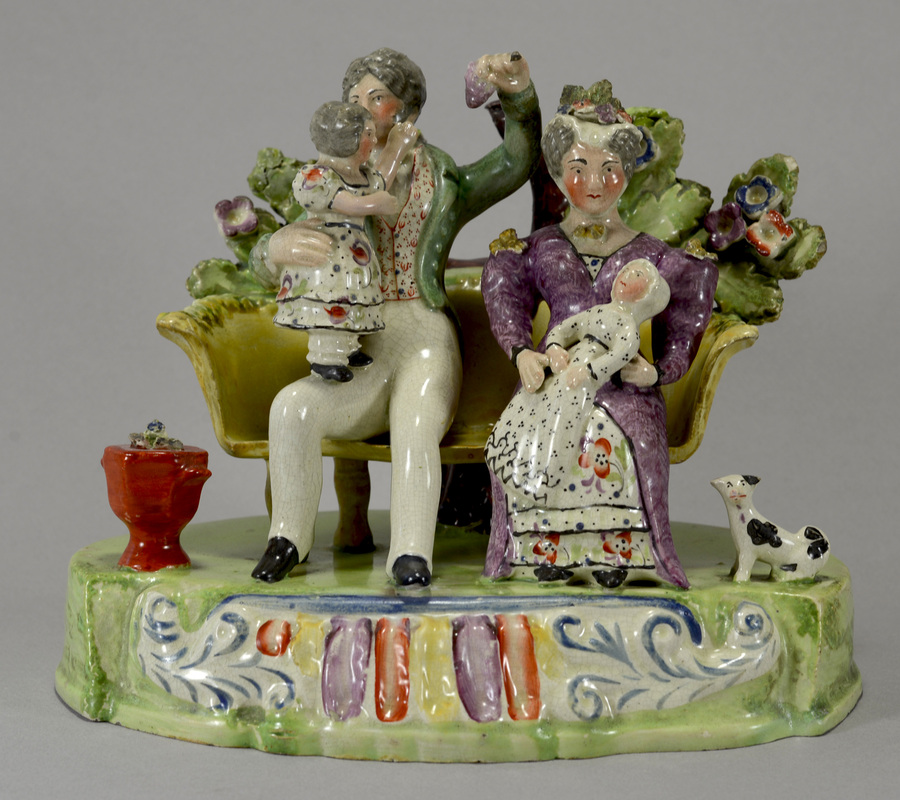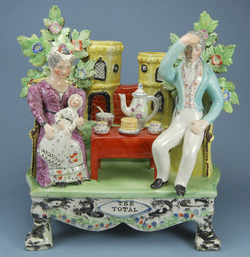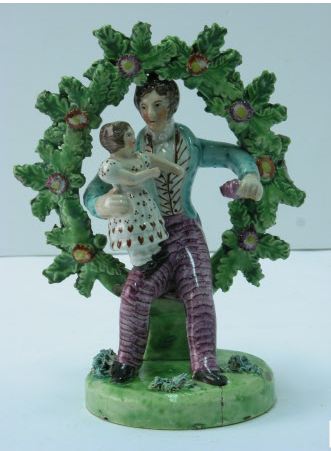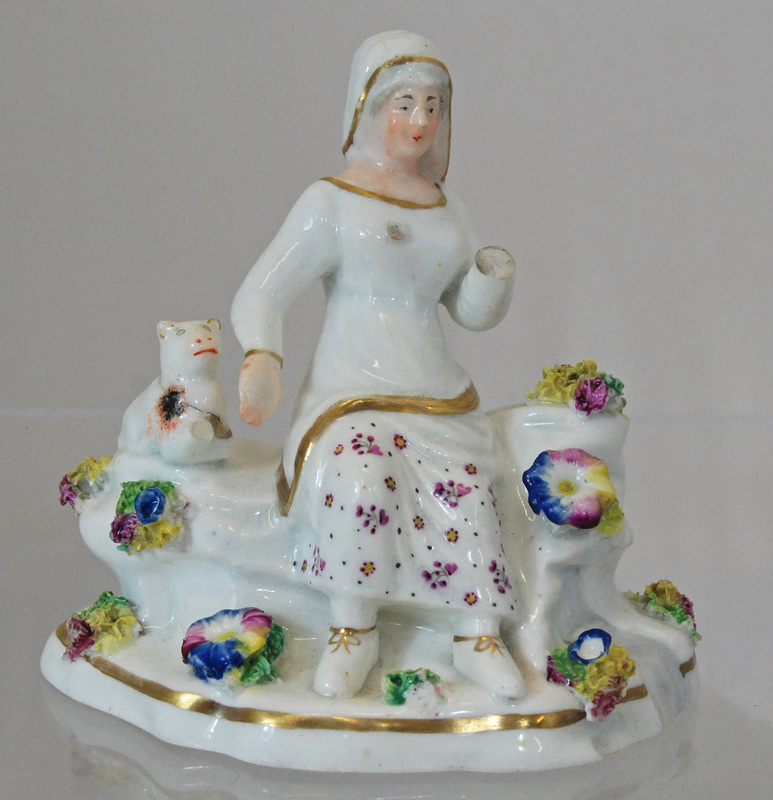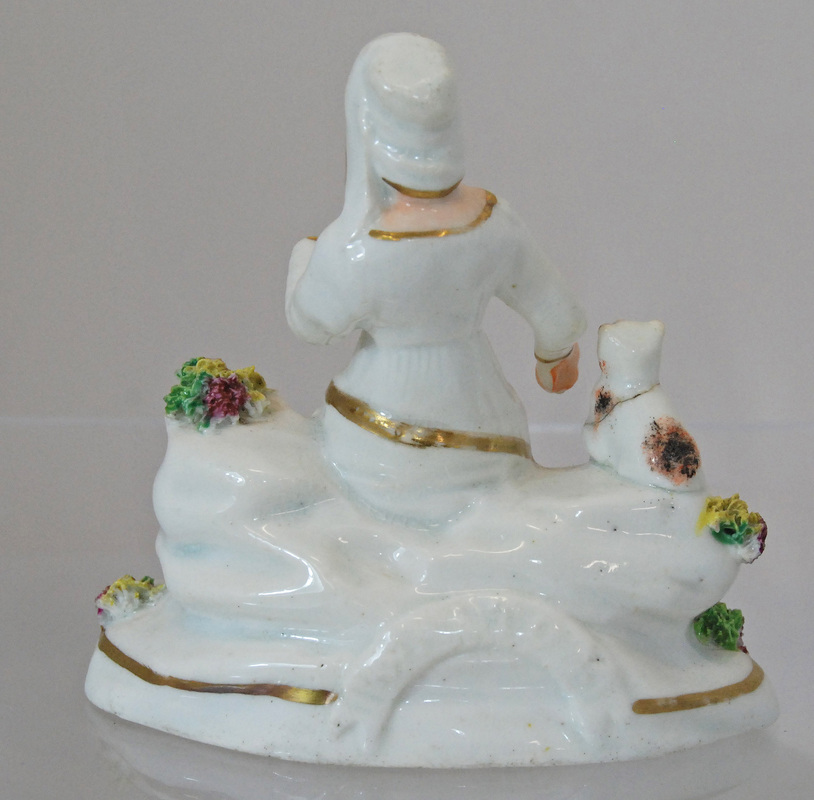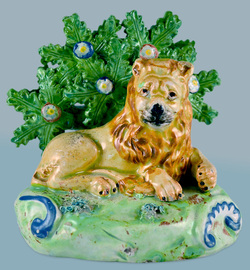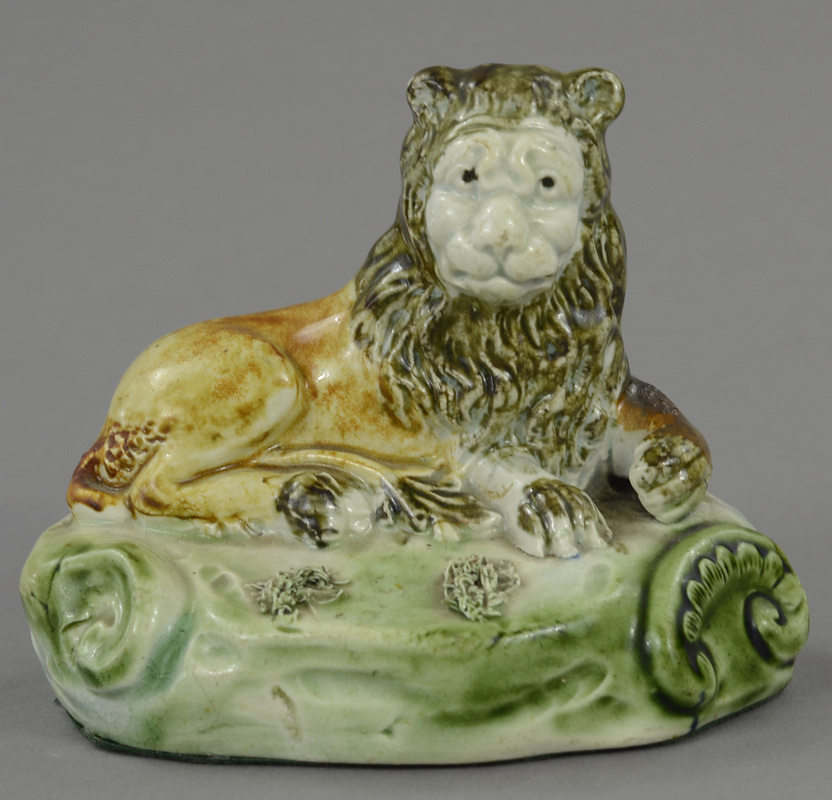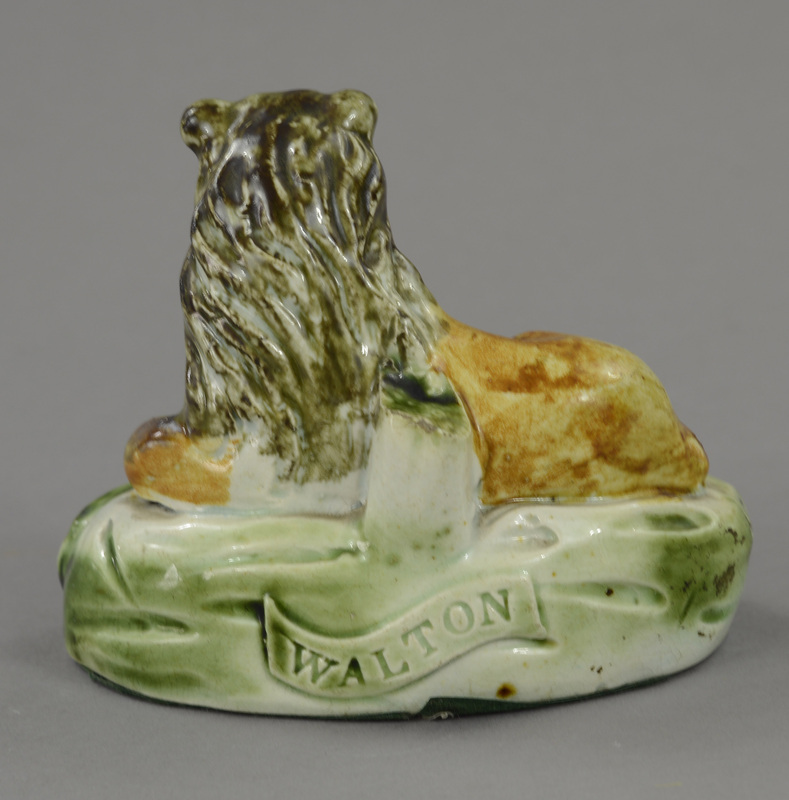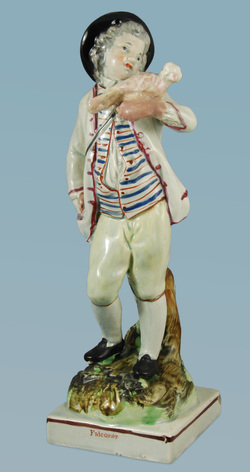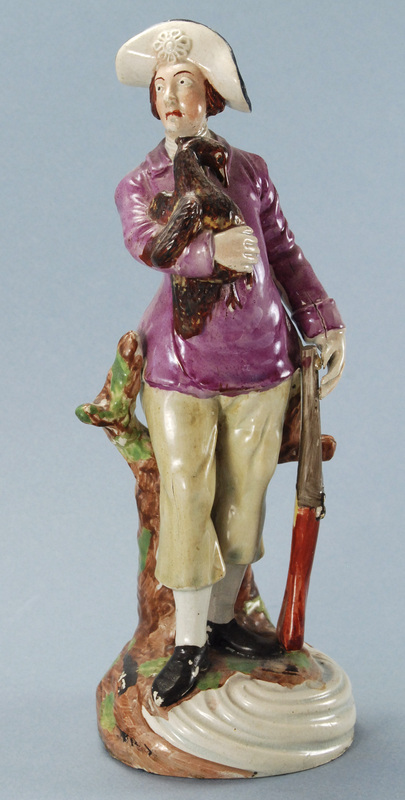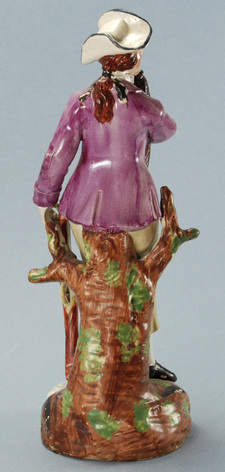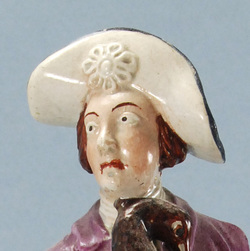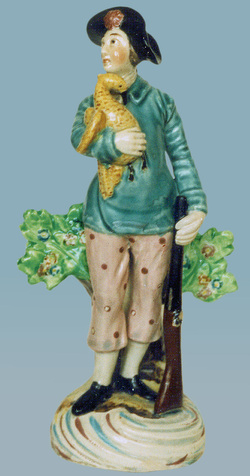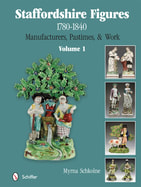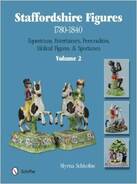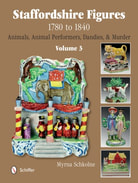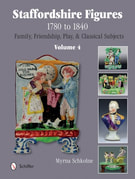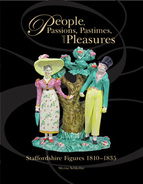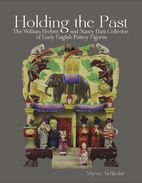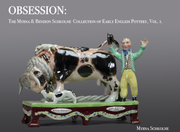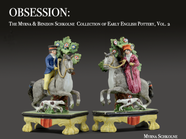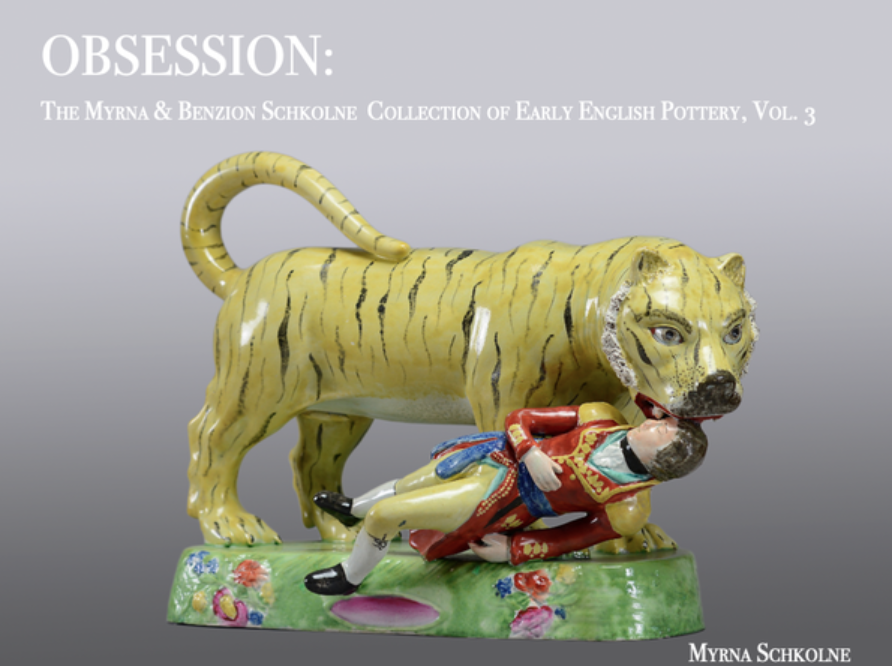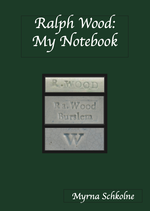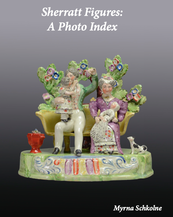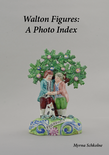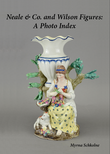So here we have Douglas, formerly Young Norval. I have seen examples of this figure titled "Douglas." You may be wondering why he has a peg-leg. Good question! You see, figures of Douglas are sometimes paired with figures of the peg-legged busker Billy Waters. Below, we have just such a pair. Billy is on the left, with his familiar tri-corn hat, and Douglas is on the right, wearing a kilt.
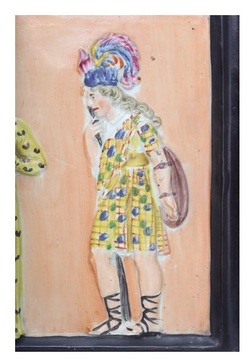
On the right we have Young Norval/Douglas. The child star Master Betty, who was a great celebrity in his time, was famous in this role. And no, he did not have a peg leg!
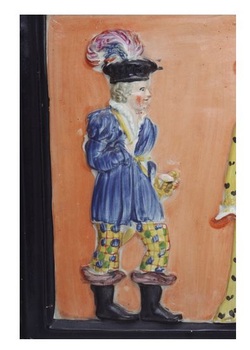
To the left, we have, I assume, Old Norval....but I am open to suggestions.
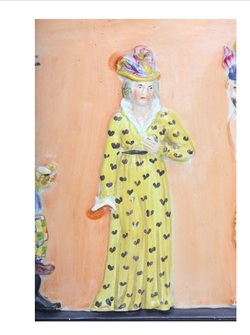
And in the center, we have Lady Randolph, with her hand to her heart as she meets her long-abandoned son. The acclaimed Sarah Siddons was very famous in this role.
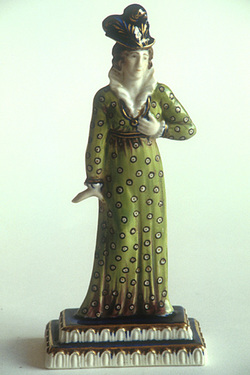
I do think the plaque is hauntingly beautiful. The play, of course, ends in tragedy. Lord Randolph gets jealous and attempts to take Douglas's life. Douglas dies in his mother's arms....and Lady Randolph then commits suicide.
